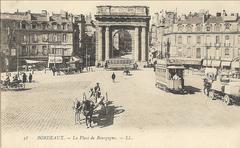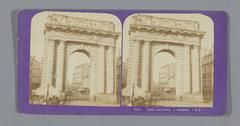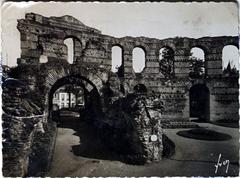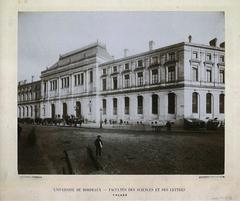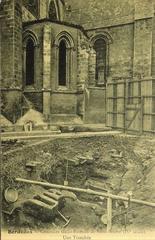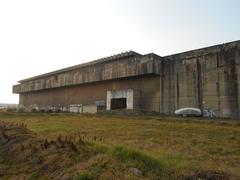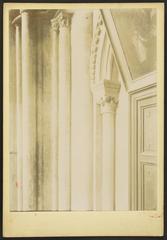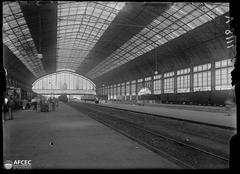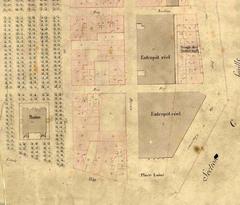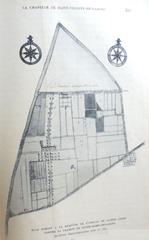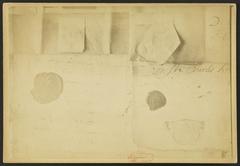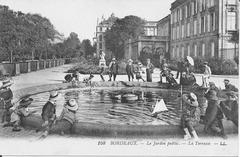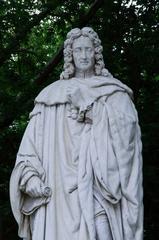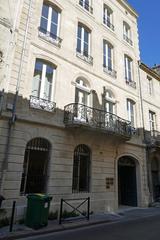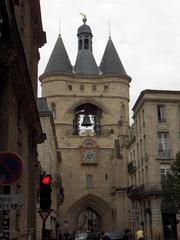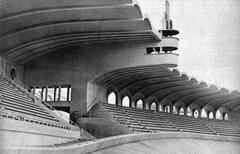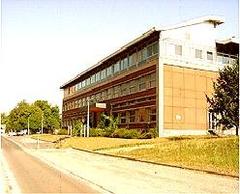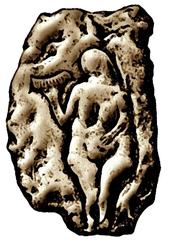
Guide to Visiting Porte de Bourgogne in Bordeaux
Publication Date: 18/07/2024
Introduction to Porte de Bourgogne
The Porte de Bourgogne, a striking neoclassical archway in Bordeaux, France, is more than just an architectural marvel; it serves as a historical gateway into the city’s rich cultural and economic past. Constructed in the mid-18th century and completed in 1755, this monumental structure was designed by the esteemed architect André Portier. The gateway was part of an extensive urban development plan led by Louis-Urbain-Aubert de Tourny, the Intendant of Guyenne, aimed at modernizing Bordeaux and showcasing its burgeoning prosperity. Situated strategically to mark the eastern entrance to Bordeaux, the Porte de Bourgogne stands as a symbol of the city’s grandeur and historical significance.
The neoclassical design of the Porte de Bourgogne is characterized by symmetrical proportions, clean lines, and classical elements such as columns and pediments. It draws inspiration from Roman triumphal arches, reflecting the 18th century’s fascination with classical antiquity. Constructed from limestone, a material abundant in the Bordeaux region, the gateway not only served an aesthetic purpose but also facilitated trade and communication by connecting Bordeaux with other major French cities, including Paris (source).
Over the centuries, the Porte de Bourgogne has witnessed numerous historical events, including the French Revolution and the two World Wars. Its preservation has been a priority, with several restoration projects ensuring that it remains a well-preserved example of 18th-century architecture. Today, it continues to be a prominent landmark and a testament to Bordeaux’s historical and cultural identity, attracting visitors from around the world. This guide provides comprehensive information on the origins, architectural significance, and practical details for visiting the Porte de Bourgogne, making it an essential read for anyone planning to explore this iconic monument.
Contents
- Introduction
- Origins and Construction
- Architectural Significance
- Historical Context
- Role in Urban Development
- Symbol of Bordeaux’s Identity
- Preservation and Restoration
- Modern-Day Significance
- Cultural Impact
- Visitor Information
- Visiting Hours
- Tickets
- Location
- Nearby Attractions
- Travel Tips
- Accessibility
- FAQs
- Conclusion
- Call to Action
Origins and Construction
The Porte de Bourgogne, an iconic gateway in Bordeaux, France, was constructed in the mid-18th century. This monumental arch was designed by the renowned architect André Portier and completed in 1755. The gateway was part of a broader urban development plan initiated by the Intendant of Guyenne, Louis-Urbain-Aubert de Tourny, who aimed to modernize Bordeaux and enhance its aesthetic appeal. The Porte de Bourgogne was strategically placed to serve as a grand entrance to the city from the east, symbolizing Bordeaux’s prosperity and architectural grandeur.
Architectural Significance
The design of the Porte de Bourgogne is a testament to the neoclassical architectural style that was prevalent during the 18th century. The arch is characterized by its symmetrical proportions, clean lines, and the use of classical elements such as columns and pediments. The structure is made of limestone, a material commonly used in Bordeaux’s architecture due to its abundance in the region. The gateway’s design was influenced by ancient Roman triumphal arches, reflecting the period’s fascination with classical antiquity.
Historical Context
The construction of the Porte de Bourgogne occurred during a period of significant economic and cultural growth in Bordeaux. The city was a major hub for trade, particularly in wine, and its port was one of the busiest in France. The gateway was part of a series of urban improvements that included the construction of new quays, public squares, and other monumental buildings. These developments were aimed at showcasing Bordeaux’s wealth and importance on the national and international stage.
Role in Urban Development
The Porte de Bourgogne played a crucial role in the urban development of Bordeaux. It marked the eastern boundary of the city and served as a focal point for the new road network that connected Bordeaux to other major cities in France, including Paris. The gateway also facilitated the movement of goods and people, contributing to the city’s economic growth. Its construction was part of a broader effort to transform Bordeaux into a modern, well-planned city that could rival other European capitals.
Symbol of Bordeaux’s Identity
Over the centuries, the Porte de Bourgogne has become a symbol of Bordeaux’s identity and heritage. It stands as a reminder of the city’s rich history and its role as a center of trade and culture. The gateway has witnessed numerous historical events, including the French Revolution and the two World Wars. Despite the passage of time, it has retained its architectural integrity and continues to be a prominent landmark in Bordeaux.
Preservation and Restoration
The Porte de Bourgogne has undergone several restoration projects to preserve its structural integrity and historical significance. In the 19th century, the gateway was restored as part of a broader effort to preserve Bordeaux’s architectural heritage. More recently, in the early 21st century, the arch underwent another round of restoration to address issues related to weathering and pollution. These efforts have ensured that the Porte de Bourgogne remains a well-preserved example of 18th-century neoclassical architecture.
Modern-Day Significance
Today, the Porte de Bourgogne is not only a historical monument but also a popular tourist attraction. It is located near the Place de la Bourse and the Garonne River, making it easily accessible to visitors. The gateway offers a glimpse into Bordeaux’s past and serves as a starting point for exploring the city’s rich cultural and architectural heritage. Its location also provides stunning views of the river and the surrounding urban landscape.
Cultural Impact
The Porte de Bourgogne has had a lasting impact on the cultural landscape of Bordeaux. It has inspired numerous artists, writers, and historians who have documented its significance in various forms of media. The gateway is often featured in postcards, paintings, and photographs, symbolizing Bordeaux’s historical and architectural legacy. It also serves as a venue for cultural events and celebrations, further cementing its role as a cultural icon in the city.
Visitor Information
- Visiting Hours: The Porte de Bourgogne is accessible at all times as it is an open public space. However, guided tours and specific events may have designated times.
- Tickets: There is no admission fee to visit the Porte de Bourgogne. However, guided tours may have separate charges.
- Location: Near Place de la Bourse and the Garonne River, Bordeaux, France. Easily accessible by public transportation.
- Nearby Attractions: Place de la Bourse, Garonne River, Bordeaux Wine Museum, and the Bordeaux Historic District.
- Travel Tips: Wear comfortable walking shoes as the area is best explored on foot. Don’t forget your camera to capture stunning views.
- Accessibility: The area around the Porte de Bourgogne is wheelchair accessible, and public transportation options are available.
FAQs
-
What are the visiting hours for Porte de Bourgogne? The Porte de Bourgogne is accessible at all times as it is an open public space. However, guided tours and specific events may have designated times.
-
How much does it cost to visit Porte de Bourgogne? There is no admission fee to visit the Porte de Bourgogne. However, guided tours may have separate charges.
-
What are some nearby attractions? Nearby attractions include Place de la Bourse, Garonne River, Bordeaux Wine Museum, and the Bordeaux Historic District.
Conclusion
The Porte de Bourgogne stands as a testament to Bordeaux’s rich history and architectural heritage. Its construction in the 18th century marked a significant period of growth and modernization for the city, and its neoclassical design reflects the architectural trends of the time. Over the centuries, the gateway has become a symbol of Bordeaux’s identity and continues to attract visitors from around the world. Through ongoing preservation efforts, the Porte de Bourgogne remains a well-preserved and cherished landmark that offers a glimpse into the city’s past and its enduring cultural legacy. Be sure to include it in your itinerary when exploring Bordeaux’s many historical sites.
Call to Action
For more information about Bordeaux’s historical sites and to stay updated on upcoming events, download our mobile app, follow us on social media, and check out our other related posts. (source)
Sources and Further Reading
- Discover Bordeaux, 2024, Bordeaux Tourism source
